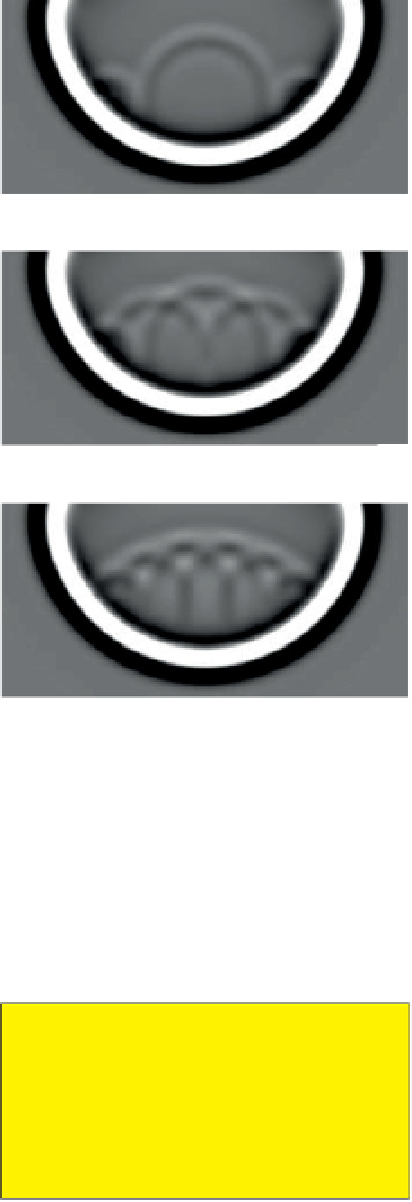Geoscience Reference
In-Depth Information
now the same as the incident wavefront. Secondly, the
transmitted wave now travels through a medium of higher
velocity, so its wavelength increases and its greater rate of
expansion causes the transmitted wavefront to separate
from the re
ected wavefront. Its higher velocity of propa-
gation leads to the creation of headwaves at the interface
(see Critical refraction in
Section 6.3.4.2
)
.
Location (
X
)
Source
Diffraction
Diffractor
Incident
wavefront
Source
6.3.4.3
Relationship between diffractors
and reflectors
An important relationship between diffractors and reflect-
series of horizontally aligned, but variably spaced, point
diffractors. The figure shows snapshots, all at the same
time since the source was
, of a wavefront that has
encountered the line of diffractors. When the diffractor
spacing is wide, individual diffracted wavefronts are seen,
which overlap and interfere. As the diffractor spacing
decreases, it is clear that the interference is increasingly
destructive (see
Appendix 2
)
except at the margins of the
area containing the wavefronts. The resulting wave
eld
approaches that produced by a continuous interface, as
shown in the lowermost part of the
figure. This result
is of importance since the concept of a re
ector being
equivalent to many closely spaced diffractors is useful for
explaining a number of crucial aspects of seismic re
ection
responses (see Post-stack time migration in
Section 6.5.2.5
,
and also see
Section 6.7.1.1
).
'
red
'
Source
Source
6.4
Acquisition and display of seismic data
Source
Seismic surveys commonly use large numbers of detectors,
sometimes many hundreds in the case of reflection surveys,
to record the response of the subsurface to waves produced
from the seismic source. Data acquisition will comprise
recordings with the source and detectors at many different
locations. The con
guration of source and detectors is
known as the spread.
Source
6.4.1
Seismic sources
Reflection
The ideal seismic source creates a wavelet that has short
duration and high energy. Short duration improves survey
resolution (see
Section 6.7.1
)
, and higher energy produces a
wavelet with higher amplitude making it easier to detect
the seismic signal within background noise. The greater
the distance the waves must travel from the source to the
detectors
Figure 6.11
Time
'
snapshot
'
images showing the interaction of an
incident wavefront with an increasing number of closer-spaced
diffractors. The travel time is the same in every case.
(equating to greater depth penetration for














































































Search WWH ::

Custom Search